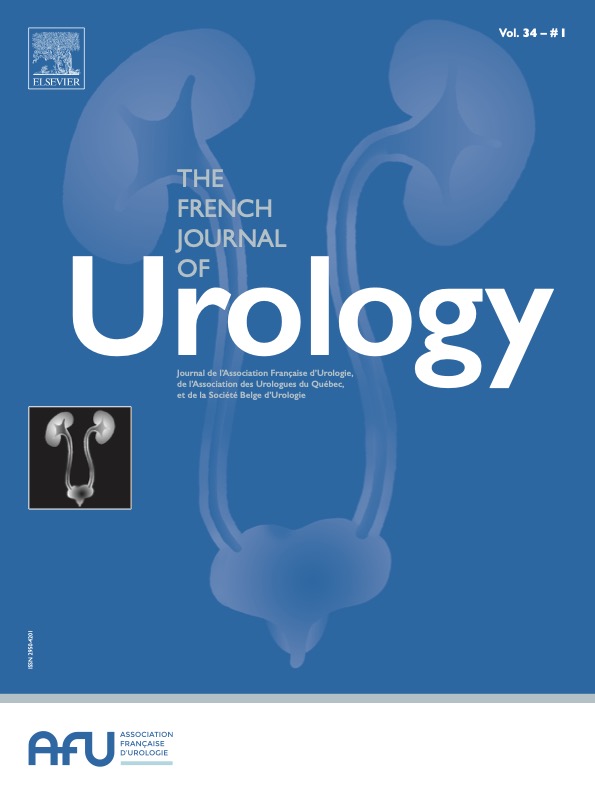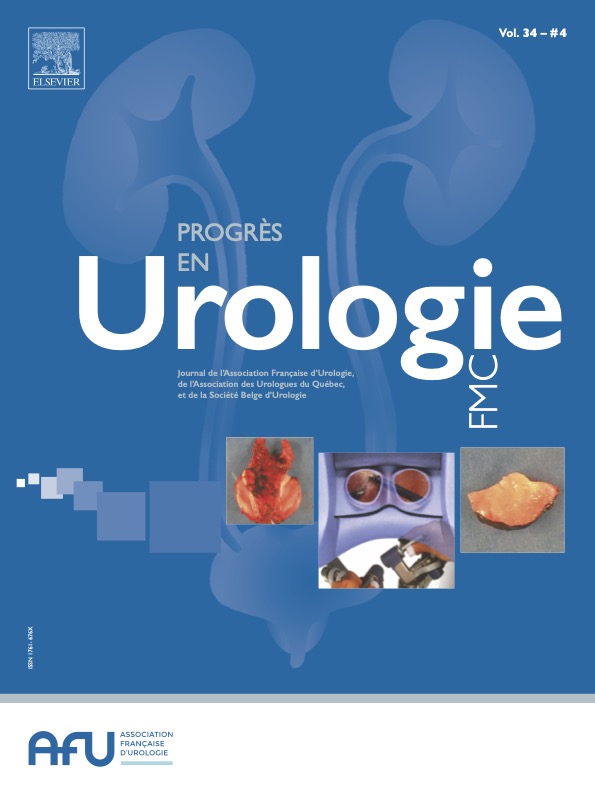|
| Rooney K., Kenton K., Mueller E.R., FitzGerald M.P., Brubaker L. Advanced anterior vaginal wall prolapse is highly correlated with apical prolapse Am J Obstet Gynec 2006 ; 195 : 1837-1840 [inter-ref] | | | Fatton B. Use of POPQ in the management of pelvic prolapse Gynecol Obstet Fertil 2006 ; 34 : 533 [inter-ref] | | | Debodinance P., Fatton B., Lucot J.P. Should a hysterectomy be carried at the same time as surgery for a prolapse by vaginal route? Prog Urol 2009 ; 19 : 1060-1073 [inter-ref] | | | Gutman R., Maher C. Uterine-preserving POP surgery Int Urogynecol J 2013 ; 24 : 1803-1813 [cross-ref] | | | Ridgeway B.M. Does prolapse equal hysterectomy? The role of uterine conservation in women with uterovaginal prolapse Am J Obstet Gynec 2015 ; | | | Thomas A.G., Brodman M.M., Dottino P.R., Bodian C., Friedman F., Bogursky E. Manchester procedure vs. vaginal hysterectomy for uterine prolapse. A comparison J Reprod Med 1995 ; 40 : 299-304 | | | Kalogirou D., Antoniou G., Karakitsos P., Kalogirou O. Comparison of surgical and postoperative complications of vaginal hysterectomy and Manchester procedure Eur J Gynaecol Oncol 1996 ; 17 : 278-280 | | | Thys S.D., Coolen A., Martens I.R., Oosterbaan H.P., Roovers J., Mol B., et al. A comparison of long-term outcome between Manchester Fothergill and vaginal hysterectomy as treatment for uterine descent Int Urogynecol J 2011 ; 22 : 1171-1178 [cross-ref] | | | de Boer T.A., Milani A.L., Kluivers K.B., Withagen M.I., Vierhout M.E. The effectiveness of surgical correction of uterine prolapse: cervical amputation with uterosacral ligament plication (modified Manchester) versus vaginal hysterectomy with high uterosacral ligament plication Int Urogynecol J Pelvic Floor Dysfunct 2009 ; 20 : 1313-1319 [cross-ref] | | | Hefni M., El-Toukhy T., Bhaumik J., Katsimanis E. Sacrospinous cervicocolpopexy with uterine conservation for uterovaginal prolapse in elderly women: an evolving concept Am J Obstet Gynecol 2003 ; 188 : 645-650 [inter-ref] | | | Maher C.F., Cary M.P., Slack M.C., Murray C.J., Milligan M., Schluter P. Uterine preservation or hysterectomy at sacrospinous colpopexy for uterovaginal prolapse? Int Urogynecol J Pelvic Floor Dysfunct 2001 ; 12 : 381-384discussion 4–5.
[cross-ref] | | | van Brummen H.J., van de Pol G., Aalders C.I., Heintz A.P., van der Vaart C.H. Sacrospinous hysteropexy compared to vaginal hysterectomy as primary surgical treatment for a descensus uteri: effects on urinary symptoms Int Urogynecol J Pelvic Floor Dysfunct 2003 ; 14 : 350-355discussion 5.
[cross-ref] | | | Dietz V., van der Vaart C.H., van der Graaf Y., Heintz P., Schraffordt Koops S.E. One-year follow-up after sacrospinous hysteropexy and vaginal hysterectomy for uterine descent: a randomized study Int Urogynecol J 2010 ; 21 : 209-216 [cross-ref] | | | Detollenaere R.J., den Boon J., Stekelenburg J., IntHout J., Vierhout M.E., Kluivers K.B., et al. Sacrospinous hysteropexy versus vaginal hysterectomy with suspension of the uterosacral ligaments in women with uterine prolapse stage 2 or higher: multicentre randomised non-i nferiority trial BMJ (Clinical researched) 2015 ; 351 : h3717 | | | Romanzi L.J., Tyagi R. Hysteropexy compared to hysterectomy for uterine prolapse surgery: does durability differ? Int Urogynecol J 2012 ; 23 : 625-631 [cross-ref] | | | Lin T.Y., Su T.H., Wang Y.L., Lee M.Y., Hsieh C.H., Wang K.G., et al. Risk factors for failure of transvaginal sacrospinous uterine suspension in the treatment of uterovaginal prolapse J Formos Med Assoc 2005 ; 104 : 249-253 [inter-ref] | | | Nieminen K., Huhtala H., Heinonen P.K. Anatomic and functional assessment and risk factors of recurrent prolapse after vaginal sacrospinous fixation Acta Obstet Gynecol Scand 2003 ; 82 : 471-478 [cross-ref] | | | Carramào S., Auge A.P., Pacetta A.M., Duarte E., Ayrosa P., Lemos N.L., et al. A randomized comparison of two vaginal procedures for the treatment of uterine prolapse using polypropylene mesh: hysteropexy versus hysterectomy Rev Col Bras Cir 2009 ; 36 : 65-72 | | | Huang L.Y., Chu L.C., Chiang H.J., Chuang F.C., Kung F.T., Huang K.H. Medium-term comparison of uterus preservation versus hysterectomy in pelvic organ prolapse treatment with Prolift mesh Int Urogynecol J 2015 ; 26 : 1013-1020 [cross-ref] | | | Chu L.C., Chuang F.C., Kung F.T., Huang K.H. Comparison of short-term outcomes following pelvic reconstruction with Perigee and Apogee systems: hysterectomy or not? Int Urogynecol J 2012 ; 23 : 79-84 [cross-ref] | | | Vu M.K., Letko J., Jirschele K., Gafni-Kane A., Nguyen A., Du H., et al. Minimal mesh repair for apical and anterior prolapse: initial anatomical and subjective outcomes Int Urogynecol J 2012 ; 23 : 1753-1761 [cross-ref] | | | Neuman M., Lavy Y. Conservation of the prolapsed uterus is a valid option: medium term results of a prospective comparative study with the posterior intravaginal slingoplasty operation Int Urogynecol J Pelvic Floor Dysfunct 2007 ; 18 : 889-893 [cross-ref] | | | Costantini E., Mearini L., Bini V., Zucchi A., Mearini E., Porena M. Uterus preservation in surgical correction of urogenital prolapse Eur Urol 2005 ; 48 : 642-649 [cross-ref] | | | Rosen D.M., Shukla A., Cario G.M., Carlton M.A., Chou D. Is hysterectomy necessary for laparoscopic pelvic floor repair? A prospective study J Minim Invasive Gynecol 2008 ; 15 : 729-734 [cross-ref] | | | Lowenstein L., Gamble T., Sanses T.V., van Raalte H., Carberry C., Jakus S., et al. Sexual function is related to body image perception in women with pelvic organ prolapse J Sex Med 2009 ; 6 : 2286-2291 [cross-ref] | | | Lowenstein L., Gamble T., Sanses T.V., van Raalte H., Carberry C., Jakus S., et al. Changes in sexual function after treatment for prolapse are related to the improvement in body image perception J Sex Med 2010 ; 7 : 1023-1028 [cross-ref] | | | Jeng C.J., Yang Y.C., Tzeng C.R., Shen J., Wang L.R. Sexual functioning after vaginal hysterectomy or transvaginal sacrospinous uterine suspension for uterine prolapse: a comparison J Reprod Med 2005 ; 50 : 669-674 | | | Zucchi A., Costantini E., Mearini L., Fioretti F., Bini V., Porena M. Female sexual dysfunction in urogenital prolapse surgery: colposacropexy vs. hysterocolposacropexy J Sex Med 2008 ; 5 : 139-145 [cross-ref] | | | Costantini E., Porena M., Lazzeri M., Mearini L., Bini V., Zucchi A. Changes in female sexual function after pelvic organ prolapse repair: role of hysterectomy Int Urogynecol J 2013 ; 24 : 1481-1487 [cross-ref] | | | Deffieux X., Savary D., Letouzey V., Sentilhes L., Agostini A., Mares P., et al. Prevention of the complications related to the use of prosthetic meshes in prolapse surgery: guidelines for clinical practice - literature review J Gynecol Obstet Biol Reprod 2011 ; 40 : 827-850 [inter-ref] | | | Tan-Kim J., Menefee S.A., Luber K.M., Nager C.W., Lukacz E.S. Prevalence and risk factors for mesh erosion after laparoscopic-assisted sacrocolpopexy Int Urogynecol J 2011 ; 22 : 205-212 [cross-ref] | | | Deng T., Liao B., Luo D., Shen H., Wang K. Risk factors for mesh erosion after female pelvic floor reconstructive surgery: a systematic review and meta-analysis BJU international 2015 ; | |
|








